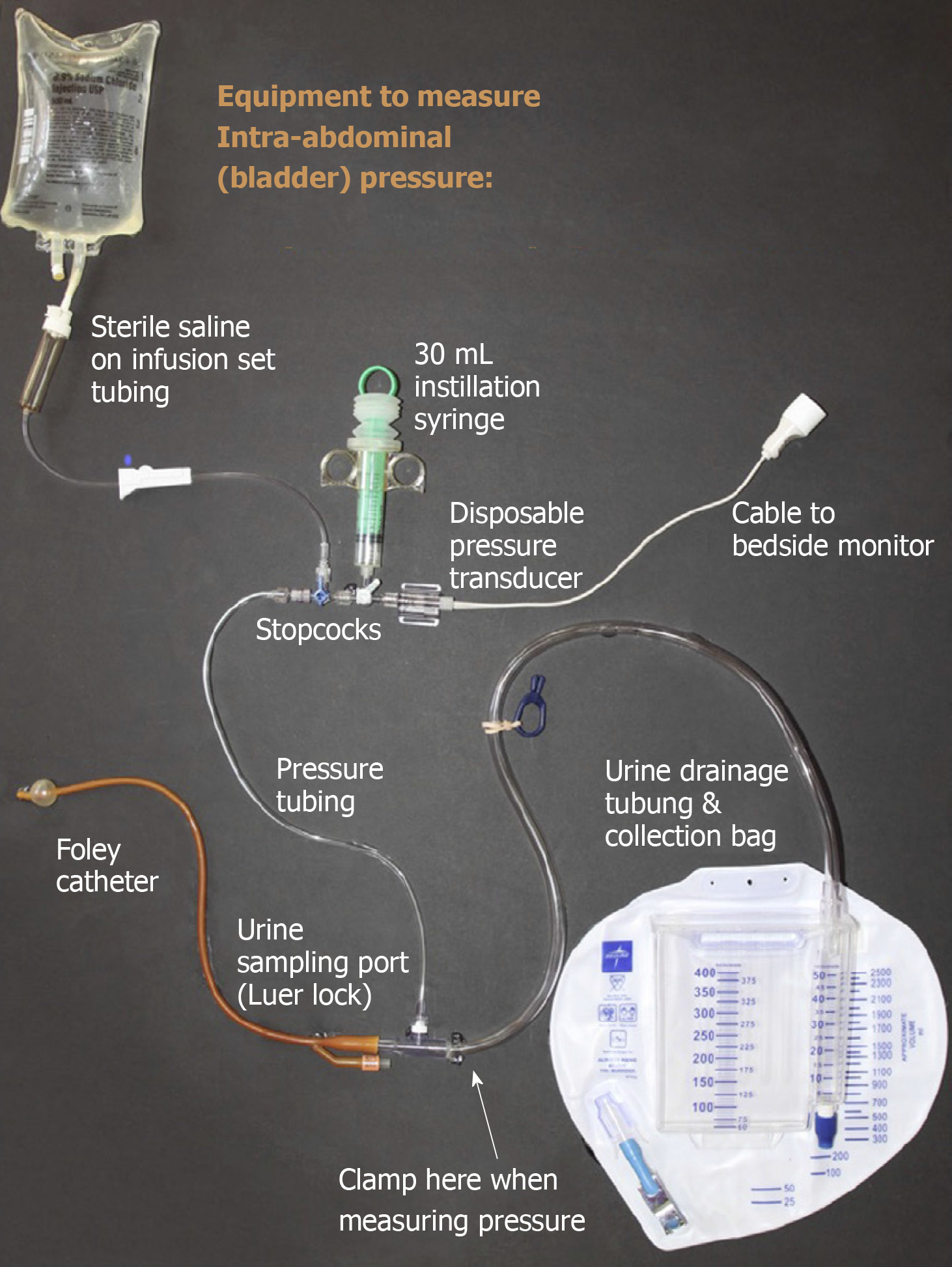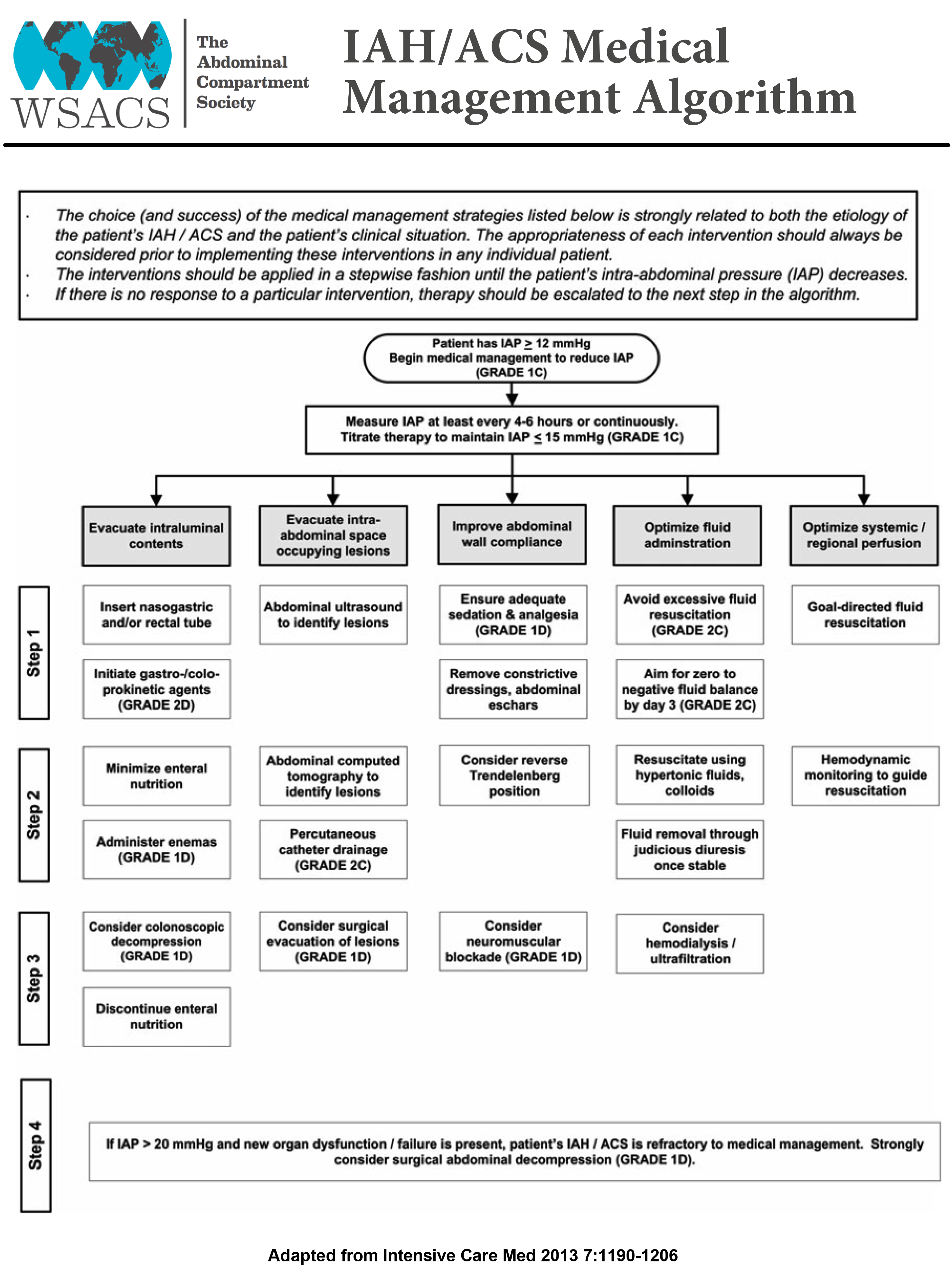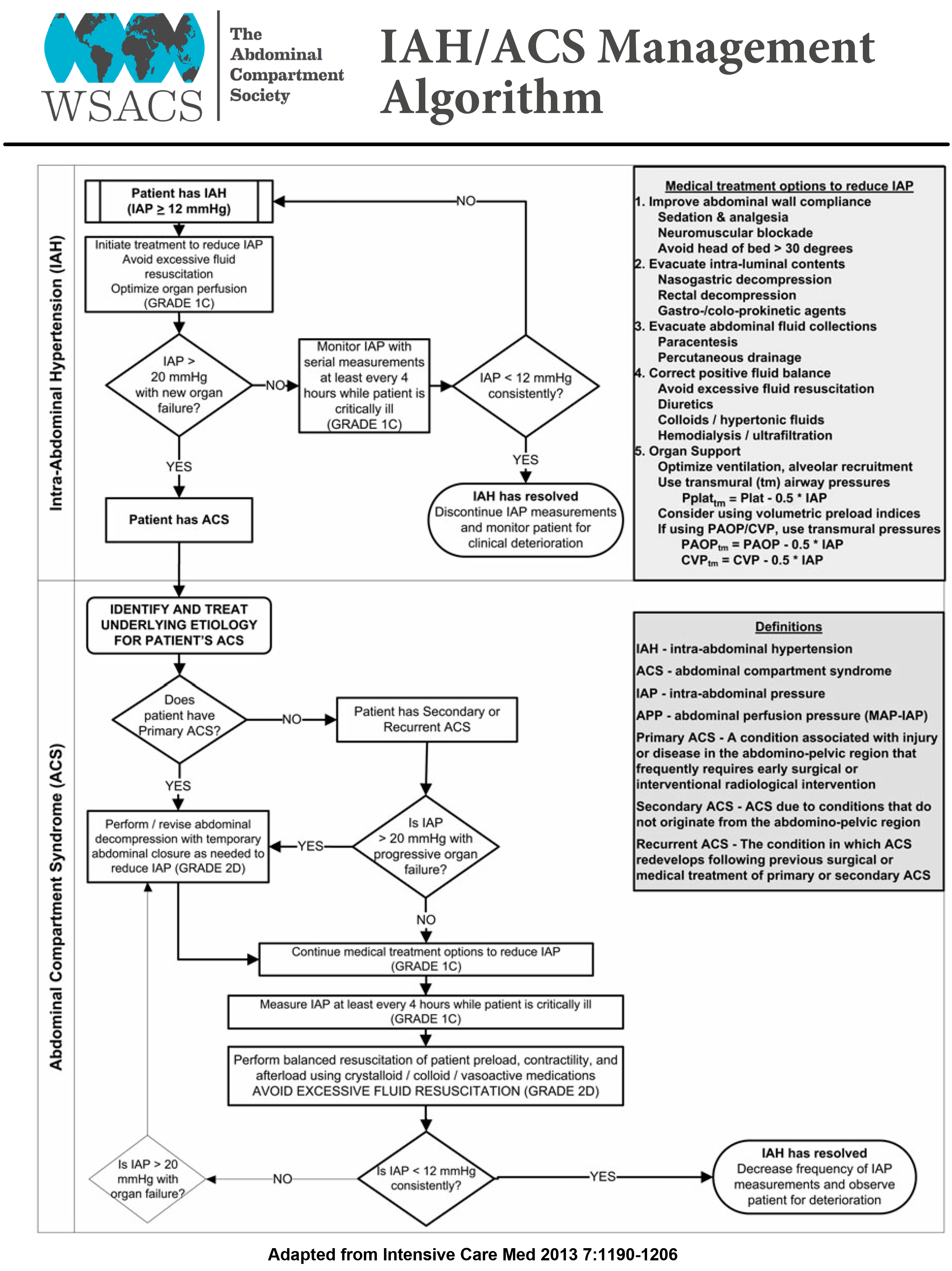Copyright
©The Author(s) 2020.
World J Gastroenterol. Jan 21, 2020; 26(3): 266-278
Published online Jan 21, 2020. doi: 10.3748/wjg.v26.i3.266
Published online Jan 21, 2020. doi: 10.3748/wjg.v26.i3.266
Figure 1 Pathophysiology of intra-abdominal hypertension.
PEEP: Positive end expiratory pressure; DVT: Deep venous thrombosis.
Figure 2 Closed system to measure bladder (abdominal) pressure constructed with readily available intensive care unit equipment.
(Adapted with permission from Rogers et al[42]).
Figure 3 Intra-abdominal hypertension/abdominal compartment syndrome management algorithm 1.
Quality of evidence for each recommendation is rated from D to A: very low (D), low (C), moderate (B) and high (A) and strength of recommendation is given by a number: strong (1) and weak (2). (Adapted with permission from Kirkpatrick et al[30]). IAH: Intra-abdominal hypertension; ACS: Abdominal compartment syndrome.
Figure 4 Intra-abdominal hypertension/abdominal compartment syndrome management algorithm 2.
Quality of evidence for each recommendation is rated from D to A: very low (D), low (C), moderate (B) and high (A) and strength of recommendation is given by a number: strong (1) and weak (2). (Adapted with permission from Kirkpatrick et al[30]). IAH: Intra-abdominal hypertension; ACS: abdominal compartment syndrome.
- Citation: Rajasurya V, Surani S. Abdominal compartment syndrome: Often overlooked conditions in medical intensive care units. World J Gastroenterol 2020; 26(3): 266-278
- URL: https://www.wjgnet.com/1007-9327/full/v26/i3/266.htm
- DOI: https://dx.doi.org/10.3748/wjg.v26.i3.266












